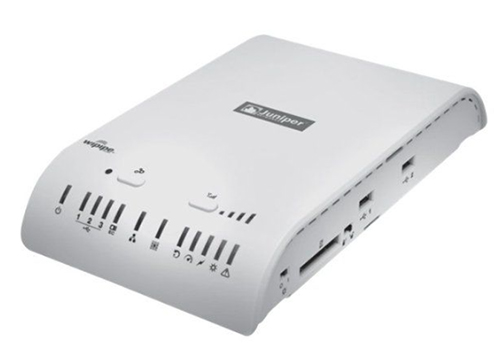Definition of terms – What is a bridge, what is a gateway?
The bridge – communication in the same network segment
A bridge is a network component that connects two or more network segments so that they act as a single segment. The bridge operates on Layer 2 of the OSI model – the so-called data link layer. Here, data packets are processed and forwarded based on their MAC addresses. Bridges thus ensure that data traffic is distributed efficiently without all network participants having to “listen” to each other. They help to avoid collisions, reduce network utilization, and improve performance.
Typical use cases for bridges are smaller networks or subnets within a LAN that are to be logically separated but physically connected.

The gateway – the door opener to other networks
A gateway, on the other hand, connects different networks with different protocols and operates at Layer 3 (transport layer) or even higher in the OSI model. While a bridge operates within a network, a gateway establishes the connection to the outside world, such as between a local company network and the Internet.
Gateways not only handle protocol translation, but also tasks such as routing, address translation (NAT), and security filtering. The use of a gateway is indispensable, especially in heterogeneous network environments where different transmission protocols or address schemes are used.

Differences at a glance
| Bridge | Gateway |
|---|---|---|
| Layer 2 (security layer) | Layer 3 (network layer) or higher |
| Connecting networks | Connecting different networks/protocols |
| MAC adresses | IP addresses, protocol contents |
| No | Yes |
| LAN segmentation | Internet access, cloud connection, routing |
| Switch with bridge function | Router, firewall, unified threat |
While bridges focus on simple efficiency optimization within a network, gateways offer full control over the transition between networks with different structures and security requirements.
Advantages and disadvantages in use
Bridge – network optimization without protocol change
Bridges are particularly useful when multiple segments within a network need to be efficiently connected without requiring a protocol change. They ensure that data streams are forwarded in a targeted manner and that broadcast domains are separated from each other. The advantage lies in their ease of use – complex configuration is usually not necessary. This makes bridges ideal for smaller networks where clear structuring is desired without the overhead of complex routing solutions.
At the same time, bridges quickly reach their limits when different network protocols or address ranges collide. In such cases, pure MAC address-based forwarding is no longer sufficient. A bridge also offers no additional security mechanisms. Functions such as NAT, firewall, or access controls are not provided. In addition, the scalability of a bridge solution is rather limited, as it offers no possibilities for network segmentation at higher OSI layers.
Gateway – powerful but more complex
Gateways, on the other hand, offer a much broader range of applications. Not only can they mediate between different protocols, but they also perform routing functions and ensure secure communication between networks through integrated security mechanisms such as firewalls, intrusion prevention, and VPN support. This makes them ideal for use in heterogeneous infrastructures, which are standard in modern corporate environments.
However, this versatility comes at a price, both in financial terms and in terms of administrative effort. Gateways require detailed configuration, and their performance depends heavily on the hardware used. In poorly planned networks, bottlenecks can occur if gateways are overloaded or incorrectly implemented. Nevertheless, the advantages clearly outweigh the disadvantages when complex requirements such as cloud connectivity, cross-location working, or comprehensive security strategies are required.
Practical example: Juniper's SRX series as a powerful gateway
A proven example of an enterprise-level gateway is the Juniper SRX series. These devices combine routing functionality with advanced security features such as:
Stateful firewall
Intrusion detection and prevention (IDP)
VPN support (IPSec, SSL)
Unified threat management (UTM)
Support for dynamic routing (OSPF, BGP)
These features make the SRX series ideal for use in medium to large enterprise networks. In particular, the combination of routing performance and comprehensive security architecture makes Juniper SRX devices true all-rounders for your network infrastructure.
The devices can also be integrated into modern management systems and allow central control and monitoring via graphical user interfaces and APIs – a clear advantage in terms of scalability and IT security.
Conclusion – When to use a bridge, when to use a gateway?
Whether bridge or gateway – the decision depends on your network architecture and requirements:
Bridge: If you want to connect simple subnetworks with identical protocols – for example, as part of a LAN expansion.
Gateway: As soon as different network protocols, IP address spaces, or security functions come into play – for example, for Internet access or cross-location connections.
For more complex infrastructures with clear security requirements, gateway solutions such as the Juniper SRX series are recommended, which perform several tasks at once and thus become the heart of your network security and stability.
Network consulting and suitable hardware at IT-Market.com
Whether you are interested in simple segmentation using bridges or a complex routing solution with gateways, you will find the right solutions at IT-Market.com. We offer refurbished and new components from renowned manufacturers such as Juniper, Cisco, and Fortinet, including up to a 3-year warranty for companies. Our certified technical experts will be happy to advise you on the right network solution for your infrastructure and, if desired, will also take care of the planning or conversion.
Do you have any questions? Then simply contact us - the IT-Market.com team is here to provide you with expert support.
